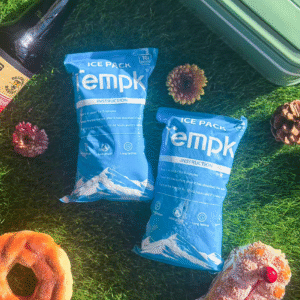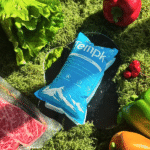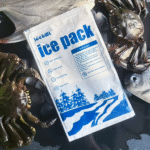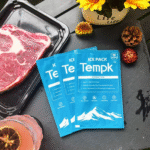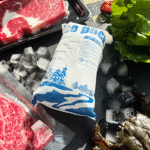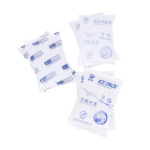Folha de gelo seco Deal: Como escolher em 2025?
Atualizado: outubro 13, 2025
Você quer um lidar com folha de gelo seco que mantém a carga segura sem custos inesperados. Este guia mostra o que o termo realmente significa, quando bate géis ou gelo seco verdadeiro, como dimensioná-lo para pistas de 24 a 72 horas, e qual 2025 regras são importantes para transporte aéreo e postal. Você obterá matemática clara, padrões de embalagem, e um scorecard de fornecedor que você pode usar hoje.
-
Que lidar com folha de gelo seco é e quando preferi-lo em vez de géis ou gelo seco verdadeiro
-
Como dimensionar um lidar com folha de gelo seco para pistas de 24 a 72 horas com matemática rápida
-
Quais padrões de empacotamento fazem um lidar com folha de gelo seco durar mais
-
Qual 2025 as etapas de conformidade se aplicam se o seu “acordo” for CO₂ sólido real
-
Como pontuar fornecedores para que lidar com folha de gelo seco fica um acordo
O que é uma folha de gelo seco, e quando é melhor?
Resposta curta: A maioria das páginas que dizem “folha de gelo seco” vende lençóis de gelo hidratáveis, CO₂ não sólido. Estas folhas de polímero multicelulares são embebidas e congeladas; eles esfriam perto 0 °C e excelente em refrigeração (2–8 ° C.) porões e pistas curtas congeladas. Use-os quando quiser secar, envoltórios limpos e para evitar etapas de materiais perigosos necessárias para gelo seco verdadeiro.
Os vendedores confiam nesta frase porque ela tem uma boa classificação e implica resfriamento “seco”. Na prática, você está comprando lençóis hidratáveis que pode cortar, enrolar, e reutilizar. O verdadeiro gelo seco é CO₂ sólido em temperaturas ultrabaixas e precisa de ventilação, marcação, e etiquetas de peso líquido.
Folha hidratável versus gelo seco verdadeiro: o que muda no desempenho?
As folhas hidratáveis estabilizam em torno do ponto de congelamento e brilham por refrigerado bens, etiquetas sensíveis à umidade, e envoltórios confortáveis de 360°. O verdadeiro gelo seco mantém faixas ultracongeladas e ultra-frias para pistas longas e cargas úteis de laboratório, mas traz tratamento de materiais perigosos. Se você precisar de ≤ −20 °C por um período prolongado, gelo seco vence; se você precisar de 2–8 °C com fácil manuseio e sem materiais perigosos, a folha é a compra mais inteligente.
| Opção de resfriamento | Banda temporária típica | Pátria? | O que isso significa para você |
|---|---|---|---|
| Folha de gelo seco Deal (hidratável) | Refrigerado 2–8 °C; congelado | Não | Envoltórios limpos, ajuste flexível, POPs simples |
| PCM / tijolos em gel | 0 Pontos de ajuste de °C a −21 °C | Não | Pontos de ajuste precisos; mais volumoso que lençóis |
| Gelo seco verdadeiro (UN1845) | ≤ -20 ° C.; Superfície ~−78,5 °C | Sim | Longas esperas, requer ventilação e rótulos |
Dicas práticas
-
Leia pistas: “Mergulhar em água” = lençol. “UN1845 / Pi 954 / kg líquido” = gelo seco verdadeiro.
-
Corresponder caso de uso: Escolha a folha para porões refrigerados, não são alvos ultrafrios.
-
Piloto primeiro: Correr 3 pistas com um registrador de dados antes de padronizar.
Caso: Uma padaria substituiu volumosos tijolos de gel por um lidar com folha de gelo seco embrulhe para doces congelados por 36 horas. Com um tijolo PCM de −21 °C, a temperatura de entrega permaneceu de -12 °C a -6 °C, taxas de reclamação reduzidas pela metade, e o custo do refrigerante caiu cerca de 15%. Nenhuma etapa de materiais perigosos foi necessária.
Como você dimensiona uma folha de gelo seco para pistas de 24 a 72 horas?
Comece simples: Para refrigerado cargas em expedidores EPS, um piloto viável é uma folha de gelo seco de 24 células por 2–3 L de volume interno mais de 24 a 48 horas, assumindo embalagens apertadas e pré-condicionamento. Para congelado alvos, emparelhar folhas com PCM −10 °C/−21 °C ou mudar para gelo seco verdadeiro dimensionado por massa. Sempre multiplique o tempo da rota por 1.2 para amortecer atrasos na última milha.
Crie sua estimativa a partir do tamanho da carga útil, isolamento, Headspace, e clima. EPS ou VIP reduzem drasticamente a carga de calor; somente papelão força você a adicionar refrigerante. Mantenha headspace ≤ 15%; use Dunnage para parar a convecção. Em pistas quentes ou longa exposição à porta, adicione 10–30% mais capacidade de folhas. Valide com um registrador de dados em três remessas consecutivas antes de “bloquear” o SOP.
Calculadora de tamanho de folha de gelo seco Deal (e matemática de gelo seco)
| Variável | Escolha típica | Por que isso importa | Ação para você |
|---|---|---|---|
| Isolamento | EPS ou VIP | Menos ganho de calor | Espere menos folhas ou menos gelo seco |
| Headspace | ≤ 15% | Limita a convecção | Adicionar material kraft/espuma |
| Buffer | × 1.2 tempo | Contas por atrasos | Preencha sua estimativa e teste |
Dicas práticas
-
Pré-condicione tudo: Congele as folhas até o núcleo; expedidores pré-resfriados.
-
Cuidado com a sazonalidade: Adicione capacidade para pistas quentes e tempo na varanda.
-
Faça login antecipadamente: Use um registrador de dados de baixo custo durante os pilotos.
Caso: Um exportador de frutos do mar sintonizou um lidar com folha de gelo seco pack-out por 48 horas adicionando 20% mais área de folha durante o verão. As reclamações caíram enquanto a massa total do líquido refrigerante permaneceu abaixo das linhas de base do gel-pack, aparando cargas DIM.
Qual embalagem faz com que uma folha de gelo seco funcione por mais tempo?
Use um padrão “sanduíche” e elimine o headspace. Coloque as folhas sob, em volta, e na parte superior do produto para contato uniforme com a superfície. Manter carga útil + refrigerante ≥ 85% do volume interno do expedidor, em seguida, bloqueie os vazios restantes. Se os rótulos odeiam a umidade, escolha folhas com face de papel ou “sem suor” para reduzir a condensação sem perder desempenho.
As atualizações de isolamento compensam rapidamente. Os expedidores de painéis VIP podem reduzir o número de folhas ou a massa de gelo seco 30–70% versus apenas papelão ou revestimentos finos. Os forros refletivos de Mylar reduzem a carga radiante e ajudam a manter a marca seca. Se você redimensionar folhas, corte ao longo das costuras para evitar absorção ou rachaduras, e evite molhar demais além da espessura de ~¾ polegada antes de congelar.
| Elemento de embalagem | Boas práticas | Ganho típico | O que fazer a seguir |
|---|---|---|---|
| Headspace | ≤ 15% vazio total | Mantém mais tempo | Adicionar material kraft/espuma |
| Forro | Mylar ou papel | Etiquetas mais secas | Use para caixas sensíveis à umidade |
| Preparação de planilha | Hidrate até ~¾″; congelar muito | Menos divisões celulares | Evite molhar demais; corte nas costuras |
Dicas práticas
-
Convecção em bloco: Pacotes apertados superam apenas a massa fria.
-
Use EPS/VIP primeiro: Gaste no valor R, não apenas refrigerante.
-
Escolha rostos “sem suor”: Mantenha as etiquetas nítidas e digitalizáveis.
Caso: Um piloto de supermercado eletrônico trocou dois blocos de gel por um lidar com folha de gelo seco envoltório mais forro reflexivo. Os produtos resfriados permaneceram entre 2 e 8 °C e a equipe removeu duas etapas de fita, reduzindo o tempo de embalagem por caixa em 40 segundos.
Como você permanece em conformidade quando uma “folha de gelo seco” é verdadeiro gelo seco?
Se sua folha hidrata, não é material perigoso. Se for CO₂ sólido, trate isso como UN1845: ventilação o pacote, marca “Dióxido de carbono, sólido (Gelo Seco),” e lista NET KG por Aqui está Pi 954. Os limites de passageiros aéreos são 2.5 kg, as embalagens não devem ser herméticas, e a carta de porte deve refletir a quantidade. Correio aéreo doméstico do USPS limita gelo seco para ≤ 5 Libra (≈ 2.27 kg) por peça; correio internacional proíbe.
As regras básicas refletem o ar no espírito: a embalagem deve permitir a liberação de gás, rótulos devem alertar os manipuladores, e variações do operador podem aumentar ou diminuir os limites. Documente seu POP: como você desabafa, como você registra gelo seco líquido, e como você treina novos packers. Se você se apegar lidar com folha de gelo seco produtos hidratáveis, você evita totalmente essas etapas de materiais perigosos.
| Modo | Regra central | O que você deve fazer |
|---|---|---|
| Carga aérea (Aqui está Pi 954) | Marca UN1845 e NET KG; fornecer caminho de ventilação | Imprimir etiquetas, ventilação, refletir sobre a carta de porte |
| Passageiro de avião | ≤ 2.5 kg por pessoa/pacote | Busque aprovação; use embalagens não herméticas |
| Ar doméstico USPS | ≤ 5 Libra por pacote; Sem internacional | Permitir liberação de gás; seguir 49 Marcas CFR |
Dicas práticas
-
Etiqueta claramente: “Dióxido de carbono, sólido (Gelo Seco)” + NET KG.
-
Nunca sele o gás: A ventilação evita o acúmulo de pressão.
-
Treine a linha: SOPs reduzem soluços de aceitação.
Caso: Um laboratório trocou “mantas de gelo seco” erroneamente rotuladas (realmente hidratável) para gelo seco verdadeiro para frascos de -70 °C. Depois de adicionar tampas ventiladas e rótulos de kg líquido, aceitação da companhia aérea mudou de 70% para 100% na primeira inspeção.
Como você avalia os fornecedores para uma folha de gelo seco comercial?
Execute um scorecard de 10 pontos e negocie somente após os pilotos. Procure um tipo de produto claro (hidratação vs UN1845), especificações da célula (por exemplo, 24-célula), ciclos de reutilização, Rostos “sem suor”, SDS e guias de embalagem, bordas cortadas sob medida, e testes térmicos normalizados. MOQs confiáveis e prazos de entrega são mais importantes do que o preço de tabela no primeiro dia.
Formatos modulares (12/24/48 células) facilitar o dimensionamento correto. Faces revestidas com Mylar reduzem a condensação. Desconto de muitos fornecedores 20–30% em compras a granel; verifique isso com desempenho documentado, não apenas reivindicações. Solicite rastreamentos de registradores no mesmo remetente, carregar, e perfil de ambiente que você usará.
| Critério | O que procurar | Seu alvo |
|---|---|---|
| Clareza do produto | Hidratável vs UN1845 é explícito | 2 |
| Especificação de célula & materiais | 24-célula; Educação Física + não tecido + SEIVA | 2 |
| Orientação sobre reutilização | Ciclos e limites documentados | 2 |
| Opção “sem suor” | Face de papel / laminado | 2 |
| Documentação | Sds + POPs de embalagem | 2 |
| Corte sob medida | As bordas resistem à absorção quando cortadas | 2 |
| Tempo de espera & Quantidade mínima | Sem pedidos pendentes surpresa | 2 |
| Reivindicações térmicas | Testes de pista normalizados | 2 |
| Pegada de resíduos | Rostos recicláveis / géis seguros para drenagem | 2 |
| Suporte técnico | Ajuda a projetar pilotos de pista | 2 |
| Pontuação ≥ 16: prosseguir; 12–15: piloto primeiro; ≤ 11: espere custos ocultos. |
Dicas práticas
-
Solicite níveis em massa: Confirmar 20–30% a economia entra em ação em seus volumes.
-
Dados de teste de demanda: Mesmo remetente, mesmo ambiente, mesma carga útil.
-
Verifique a capacidade de corte: As folhas devem cortar nas costuras sem vazamentos.
Caso: Um 3PL farmacêutico escolheu um lidar com folha de gelo seco fornecedor com testes normalizados e rostos “sem suor”. O tempo de treinamento caiu, e os retornos caíram apesar dos picos do verão – validando o preço de nível mais alto.
2025 desenvolvimentos e tendências no resfriamento da cadeia de frio
O mercado continua crescendo à medida que o comércio eletrônico, D2C congelado, e as vias de saúde se expandem. Pacotes híbridos que combinam lidar com folha de gelo seco os envoltórios com pontos de ajuste PCM direcionados estão aumentando, enquanto os painéis VIP reduzem a massa total do líquido refrigerante. Espere mais foco do operador na aceitação de cuidados de saúde e em sistemas reutilizáveis através de 2025.
O que há de novo 2025
-
Folhas habilitadas para sensor: Complementos de IoT rastreiam a temperatura do produto e as condições de CO₂.
-
PCM híbrido + gelo seco: Estende os porões congelados com menor refrigeração total.
-
Materiais circulares: Invólucros recicláveis e revestimentos ecológicos se tornam populares.
Instantâneo de mercado: Embalagem/logística mostram crescimento de dois dígitos até o início da década de 2030; previsões de logística da cadeia de frio pairam perto ~13% CAGR através 2032. Os alimentos congelados crescem de forma constante à medida que as marcas D2C se apoiam em embalagens robustas de última milha.
Perguntas frequentes
Uma folha de gelo seco comercial é igual ao gelo seco real?
Não. É uma folha multicelular hidratável que esfria perto 0 °C, enquanto o verdadeiro gelo seco é CO₂ sólido perto de -78,5 °C e requer etapas de materiais perigosos.
Quantas folhas eu preciso para 48 horas?
Para alvos refrigerados em um expedidor EPS, comece com uma folha de 24 células por 2–3 L de volume interno, em seguida, ajuste pelos dados do piloto.
Posso cortar as folhas para caber em caixas menores?
Sim, a maioria é modular. Corte ao longo das costuras seladas para evitar vazamentos ou absorção.
É seguro para remessas de alimentos?
Sim, quando usado indiretamente. Escolha folhas “sem suor” ou com face de papel para caixas sensíveis a etiquetas.
Posso voar com uma folha de gelo seco??
Folhas hidratáveis não são perigosas. Para verdadeiro gelo seco, limite de passageiros é 2.5 kg e a embalagem devem ser ventiladas e rotuladas.
Resumo e recomendações
UM lidar com folha de gelo seco é ideal para pistas refrigeradas e porões congelados curtos, evitando materiais perigosos, cortando mão de obra, e envolvendo uniformemente os produtos. Para esperas ultra-frias ou longas, tamanho verdadeiro gelo seco em massa e atualizar o isolamento. Mate Headspace, pré-condição para o núcleo, e validar com um registrador de dados antes de dimensionar os SOPs. Use o scorecard de 10 pontos para evitar que “negócios” se tornem surpresas.
PRÓXIMOS PASSOS (CTA):
-
Definir faixa temporária e tempo de espera; 2) escolha EPS/VIP; 3) comece com a folha ou estimador de gelo seco aqui; 4) executar três pilotos e finalizar POPs com treinamento. Fale com Tempk para obter um kit de teste de pista.
Sobre Tempk
Projetamos kits práticos de cadeia de frio - expedidores EPS/VIP, lidar com folha de gelo seco pacotes, e conjuntos PCM - para que você atinja a temperatura sem gastar demais. Nosso foco é baixo headspace, embalagem rápida, e POPs simples que novas equipes podem seguir após uma sessão de treinamento. Peça-nos amostras ou um plano piloto para o perfil da sua pista.






